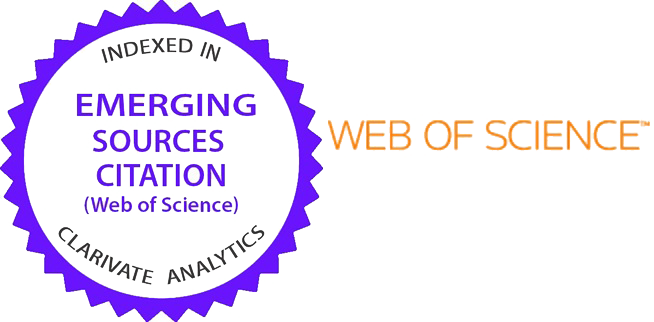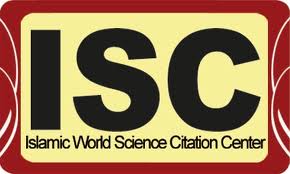Natural Bitumen in Hot Asphalt Mixture: Suitability of Using Treated Natural Bitumen Instead of Petroleum Asphalt Binder
DOI:
https://doi.org/10.31436/iiumej.v26i2.3452Keywords:
Natural bitumen, heat treatment, petroleum asphalt, Marshall, moisture damageAbstract
In recent years, the search for economic and environmentally friendly alternatives has become a global necessity to achieve sustainability and preserve raw materials. From this concept, natural bitumen (NB) derived from sulphur springs is now one of the most promising alternative energy resources for many applications, especially in asphalt pavement construction. Its low price and abundance characterise NB since sulphur springs produce thousands of tonnes of NB annually and are used in very limited fields. Two main objectives were adopted for this work. The first objective is to examine the virgin NB properties from five sulphur springs and compare them with petroleum asphalt. The second objective is to enhance NB properties by applying heat treatment. The experimental results reveal that heat treatment is highly effective in improving the NB properties. This was confirmed by conducting many tests, such as asphalt, Marshall, SEM-EDX, and indirect tensile strength tests. Based on the experimental test outcomes, virgin NB properties do not conform to asphalt specification limits and are unsuitable for flexible roads. Also, MS-NB significantly affected the mechanical properties of the asphalt mixture, as Marshall's stability increased by 41.3% compared to the conventional mixture. In addition, SS-NB was more effective in moisture damage resistance due to increasing the tensile strength ratio by 5.72 % and provided a higher stiffness index than the conventional mixture by 40.36%. In conclusion, the treated NB can successfully be used as a binder material in hot asphalt mixtures.
ABSTRAK: Beberapa tahun kebelakangan, pencarian alternatif baharu ekonomi dan mesra alam telah menjadi satu keperluan global bagi mencapai kemampanan dan memelihara bahan mentah. Melalui konsep ini, bitumen asli (NB) yang diperoleh daripada mata air sulfur kini merupakan satu sumber tenaga alternatif yang berguna bagi digunakan dalam pelbagai aplikasi, terutamanya dalam pembinaan turapan asfalt. NB dicirikan oleh harga yang rendah dan kelimpahannya kerana mata air sulfur menghasilkan beribu-ribu tan NB setiap tahun dan digunakan dalam bidang terhad. Dua objektif utama telah dipakai untuk kajian ini. Objektif pertama adalah memeriksa sifat NB dara daripada lima mata air sulfur dan membandingkannya dengan asfalt petroleum. Objektif kedua adalah meningkatkan sifat NB dengan menggunakan rawatan haba. Dapatan eksperimen mendedahkan bahawa rawatan haba sangat berkesan dalam meningkatkan sifat NB. Ini disahkan dengan menjalankan pelbagai ujian, seperti ujian asfalt, ujian Marshall, ujian SEM-EDX, dan ujian kekuatan tegangan tidak langsung. Berdasarkan dapatan eksperimen, sifat NB dara tidak mematuhi had spesifikasi asfalt dan tidak sesuai untuk jalan fleksibel. Selain itu, MS-NB mempunyai kesan ketara pada sifat mekanikal campuran asfalt kerana kestabilan Marshalls meningkat sebanyak 41.3% berbanding campuran konvensional. Tambahan, SS-NB lebih berkesan dalam rintangan kerosakan lembapan kerana meningkatkan nisbah kekuatan tegangan sebanyak 5.72 % dan memberikan indeks kekukuhan yang lebih tinggi daripada campuran konvensional sebanyak 40.36%. Kesimpulannya, NB yang dirawat boleh berjaya digunakan sebagai bahan pengikat dalam campuran asfalt panas.
Downloads
Metrics
References
Ng CP, Law TH, Jakarni FM, Kulanthayan S. (2019) Road infrastructure development and economic growth. IOP Conference Series: Materials Science and Engineering, 512(1):12045. https://iopscience.iop.org/article/10.1088/1757-899X/512/1/012045.
Latief RH. (2019) Evaluation of the performance of glasphalt concrete mixtures for binder course. International Journal on Advanced Science, Engineering and Information Technology, 9(4): 1251-1259. https://doi.org/10.18517/ijaseit.9.4.5858.
Chen J, Dan H, Ding Y, Gao Y, Guo M, Guo S, et al. (2021) New innovations in pavement materials and engineering: A review on pavement engineering. Journal of Traffic and Transportation Engineering, 8(6): 815–999. https://doi.org/10.1016/j.jtte.2021.10.001.
Ko?odziej K, Bichaj?o L, Siwowski T. (2021) Effects of aging on the physical and rheological properties of trinidad lake asphalt modified bitumen. Journal of Materials,14(10): 2532. https://doi.org/10.3390/ma14102532.
Al-Azawee ET, Latief RH. (2020) The feasibility of using styrene-butadiene-styrene (SBS) as modifier in Iraqi bituminous binder. Journal of Engineering Science and Technology, 15(3): 1596–1607.
Petrov SM, Kayukova GP, Goncharova IN, Safiulina AG, Lakhova AI. (2018) High-quality asphalt binders produced by deasphalting of natural bitumen. Section Oil and Gas Exploration, 14(1.4): 455-460. https://doi.org/10.5593/sgem2018/1.4/S06.060.
Zhang XF, Zeng Y, Feng YN, Zhang CX, Zhang L. (2023) Carbon emissions analysis of producing modified asphalt with natural asphalt. Green Processing and Synthesis, 12(1): 20228146. https://doi.org/10.1515/gps-2022-8146.
Khusnutdinov I, Goncharova I, Safiulina A. (2021) Extractive deasphalting as a method of obtaining asphalt binders and low-viscosity deasphalted hydrocarbon feedstock from natural bitumen. Egyptian Journal of Petroleum, 30(2): 69-73. https://doi.org/10.1016/j.ejpe.2021.03.002.
Anupam K, Akinmade D, Kasbergen C, Erkens S, Adebiyi F. (2023) A state-of-the-art review of Natural bitumen in pavement: Underlining challenges and the way forward. Journal of Cleaner Production, 382(8): 134957. https://doi.org/10.1016/j.jclepro.2022.134957.
Kök BV, Yílmaz M, Turgut P, Kulog N. (2012) Evaluation of the mechanical properties of natural asphalt-modified hot mixture. International Journal of Materials Research, 103(4): 506-512. https://doi.org/10.3139/146.110654.
Nalbandian KM, Carpio M, González A. (2021) Analysis of the scientific evolution of self-healing asphalt pavements. Journal of Cleaner Production, 293: 126107. https://doi.org/10.1016/j.jclepro.2021.126107.
Mahmood NS. (2011) Sand dunes modification by natural asphalt with cement and lime. Muthanna Journal of Engineering and Technology, 1(1): 66-75. https://muthjet.mu.edu.iq/wp-content/uploads/2022/08/Sand-dunes-modification-by-natural-asphalt-with-cement-and-lime.pdf.
Bilski M. (2018) Natural asphalts – properties and use. Archives of Institute of Civil Engineering, 27(27): 25-36. DOI:10.21008/j.1897-4007.2018.27.02.
Al Dulaymie AS, Hussien B, Gharbi MA, Mekhlif HN. (2013) Balneological study based on the hydrogeochemical aspects of the sulfate springs water (Hit-Kubaiysa region), Iraq. Arabian Journal of Geosciences, 6(3): 801-816. https://doi.org/10.1007/s12517-011-0385-5.
Sobhi S, Yousefi A, Behnood A. (2020) The effects of Gilsonite and Sasobit on the mechanical properties and durability of asphalt mixtures. Construction and Building Materials, 30(238): 117676. https://doi.org/10.1016/j.conbuildmat.2019.117676.
Mohammed FH, Latief RH, Albayati AH. (2024) Assessment of traditional asphalt mixture performance using natural asphalt from sulfur springs. Journal of Engineering, 30(1): 54-73. https://doi.org/10.31026/j.eng.2024.01.04.
Mahmood BA. (2021) Influence of waste engine oil addition on the properties of natural asphalt. In Proceedings of the Second International Virtual Conference on Pure Science: 21-22 April 2020; Diwaniyah. pp 1-11. https://dx.doi.org/10.1088/1742-6596/1999/1/011001.
Koshkarov V, Shunyaev I, Koshkarov E. (2023) Characteristics evaluation of modern bituminous binders in group hydrocarbon composition and their application in construction. Materials Sciences and Applications, 14(8): 407-415. https://doi.org/10.4236/msa.2023.148026.
Shlimon AG, Mansurbeg H , Othman RS, Gittel A, Aitken CM , Head IM, et al. (2020) Microbial community composition in crude oils and asphalts from the kurdistan region of Iraq. Geomicrobiol Journal, 37(7): 635-652. https://doi.org/10.1080/01490451.2020.1753131.
Farhan MM, Rabeea MA, Muslim RF, Zidan TA. (2021) Chemical composition (saturate fraction) of western Iraq natural bitumen. Journal of Materials, 42(5): 2527–2533. https://doi.org/10.1016/j.matpr.2020.12.574.
Muttar AA, Zedan TA, Mahmood BA. (2009) Analytical comparison study for asphalt and water of Heet sulphurous springs. Journal of University of Anbar for Pure Science, 3(1): 45-56. https://doi.org/10.37652/juaps.2009.15453.
Abdul-Jaleel T, Najres M. (2012) Oxidation influence on the chemical content and some rheological properties for natural asphalt to Abu Al Jeer-Al Anbar. Iraqi Journal of Desert Studies, 4(1): 1-15. DOI:10.36531/ijds.2012.68137.
Abdul-Jaleel T, Salem JW, Najres AM. (2016) A new separation, fractionation and improving of Abu- Aljeer asphalt. Anbar Journal of Engineering Science, 7(1): 31-41. https://doi.org/10.37649/aengs.2016.124363.
Mahmood BA, Al-Ani Y, Mohammed KA, Eyada SO. (2018) The feasibility of using plastic wastes to improve the properties of natural asphalt. Journal of Engineering and Applied Science, 13(21): 8929–8934. https://doi.org/10.3923/jeasci.2018.8929.8934.
Ahmed F, Latief R, Albayati A. (2024) Effect of natural bitumen on the performance of hot asphalt mixture?. Gazi University Journal of Science, 37(3): 1154–1170. https://doi.org/10.35378/gujs.1282239.
State Corporation for Roads and Bridges. General Specification for Roads and Bridges (SORB/R9)-Hot Mix Asphaltic Concrete Pavement. Baghdad, Iraq: Department of Planning and Studies, Republic of Iraq, Ministry of Housing and Construction; 2003.
Altameemi AA, Al-Jumaili MA, Mohammed AJ, Abdul karim A. (2016) Studying the possibility of utilizing the vast deposits of natural asphalt in Iraq in specific uses using as little as possible manufacturing treatment. The Iraqi Journal for Mechanical and Material Engineering, 1(1): 462-488.
Tosun HB, Alver A, Ba?türk E. (2022) Removal of exhaust gas with advanced solar photocatalytic asphalt applications. KSCE Journal of Civil Engineering, 26(1): 13-24. https://doi.org/10.1007/s12205-021-0654-0.
Mithil M, Raju A, Ahmed W, Soon J. (2018) SEM and ESEM techniques used for analysis of asphalt binder and mixture. Journal of Construction and Building Materials, 186(1): 313-329. https://doi.org/10.1016/j.conbuildmat.2018.07.126.
Liang T, Wang J, Kou X, Peng P. (2024) Influence mechanism of original components on mechanical properties and transformation behaviors of natural bitumen. Fuel, 371 (Part A): 131924. https://doi.org/10.1016/j.fuel.2024.131924.
Zhang M, Hao P, Dong S, Li Y, Yuan G. (2020) Asphalt binder micro-characterization and testing approaches: A review. Measurement, 151: 107255. https://doi.org/10.1016/j.measurement.2019.107255.
Yamaguchi K, Sasaki I, Nishizaki I, Meiarashi S, Moriyoshi A. (2005) Reinforcing effects of carbon black on asphalt binder for pavement. Journal of the Japan Petroleum Institute, 48(6): 373?379. https://doi.org/10.1627/jpi.48.373.
Yao H, Liu J, Xu M, Bick A, Xu Q, Zhang J. (2021) Generation and properties of the new asphalt binder model using molecular dynamics (MD). Scientific Reports, 11: 9890. https://doi.org/10.1038/s41598-021-89339-5
Khedaywi T, Haddad M, Mujalli R, Shareef S. (2023) Effect of sulfur on the asphalt cement and asphalt concrete mixture. Innovative Infrastructure Solutions, 8(11): 286. https://doi.org/10.1007/s41062-023-01264-w.
Awadh SM, Al-Mimar HS. (2023) The effect of nickel, vanadium, asphaltene, NSO and sulfur on crude oil quality. Iraqi Geological Journal, 56(2B): 137-144. https://doi.org/10.46717/igj.56.2B.10ms-2023-8-19.
Yuan Y, Chen H, Wang Y, Xu S, Xue B, Zou G, Wang B. (2023) How calcium and magnesium ions affect the stability of asphalt with anionic emulsifiers: A molecular dynamics study. Construction and Building Materials, 12(10): 132770. https://doi.org/10.1016/j.conbuildmat.2023.132770.
Sakib N, Bhasin A, Islam MK, Khan K, Khan MI. (2021) A review of the evolution of technologies to use sulphur as a pavement construction material. International Journal of Pavement Engineering, 22(3): 392–403. https://doi.org/10.1080/10298436.2019.1612064.
Sanja D, Miroslav S, Martina Z, Tatjana R. (2021) Laboratory evaluation of the properties of asphalt mixture with wood ash filler. Journal of Materials, 14(3): 575. https://doi.org/10.3390/ma14030575.
Abd NI, Latief RH. (2024) Assessment of rutting resistance for fiber-modified asphalt mixtures. Journal of Engineering, 30(5): 98–113. https://doi.org/10.31026/j.eng.2024.05.07.
Omar HA,Yusoff NI, Mubaraki M, Ceylan H. (2020) Effects of moisture damage on asphalt mixtures. Journal of Traffic and Transportation Engineering, 7(5): 600–628. https://doi.org/10.1016/j.jtte.2020.07.001.
Al-Saadi AA, Ismael MQ. (2023) Improvement of moisture susceptibility for asphalt mixture with ceramic fiber. Journal of Engineering, 29(4): 78–91. https://doi.org/10.31026/j.eng.2023.04.05.
Yildiz I. (2018) Chapter 1.12 Fossil Fuels. In Comprehensive Energy Systems, 521-567. https://doi.org/10.1016/B978-0-12-809597-3.00111-5.
Kaylyn MC, Khalafalla M, Benavides JR. (2021) Protocol to assess the impact of crude oil price fluctuations on future asphalt prices. Journal of the Transportation Research Board, 2675(6): 294-305. https://doi.org/10.1177/0361198121992072.
U.S. Bureau of Labor Statistics, U.S. Department of Labor. Website Available: https://www.bls.gov/data/.
Downloads
Published
How to Cite
Issue
Section
License
Copyright (c) 2025 IIUM Press

This work is licensed under a Creative Commons Attribution-NonCommercial 4.0 International License.






















